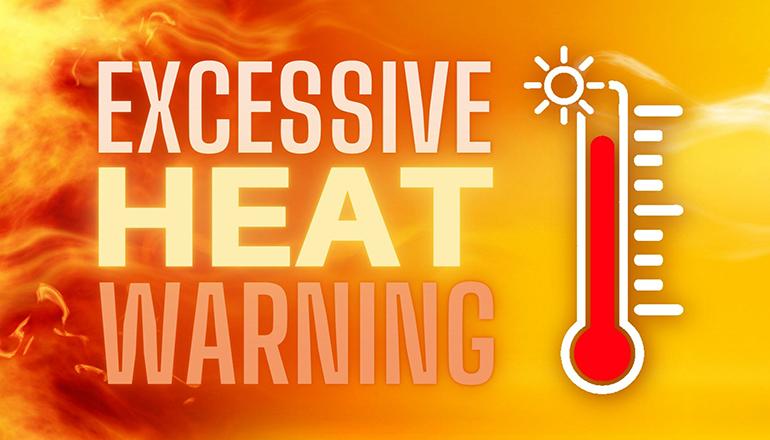The National Weather Service has issued an Excessive Heat Warning, which remains in effect until 10 p.m. Thursday, August 24, 2023, for various counties in north Missouri. Daytime high temperatures will range in the mid to upper 90s with heat index values expected to soar up to 120 degrees during this period, prompting concerns about heat-related illnesses.
An excessive heat warning is a notice issued by the National Weather Service of the United States within 12 hours of the heat index reaching one of two criteria levels. In most areas, a warning will be issued if there is a heat index of at least 105 °F (41 °C) for more than three hours per day for two consecutive days, or if the heat index is greater than 115 °F (46 °C) for any period of time.
Residents in the following Missouri counties should be on high alert during this warning:
Adair, Andrew, Atchison, Bates, Buchanan, Caldwell, Carroll, Cass, Chariton, Clay, Clinton, Cooper, Daviess, DeKalb, Gentry, Grundy, Harrison, Henry, Holt, Howard, Jackson, Johnson, Lafayette, Linn, Livingston, Macon, Mercer, Nodaway, Pettis, Platte, Putnam, Randolph, Ray, Saline, Schuyler, Sullivan and Worth counties.
During prolonged periods of high temperatures, using air conditioning – either at home or by seeking shelter in a local cooling center — is the best preventive measure.
“Heat and humidity can place a lot of stress on the body,” said DHSS Director Paula Nickelson. “Heat exhaustion can come on suddenly, with little warning, and lead to heatstroke which becomes a very dangerous situation.”
During excessive heat, Missourians are urged to check on friends and neighbors, especially those who are elderly and chronically ill. To report a senior citizen or an adult with disabilities who is in need of assistance due to the heat, call the state’s toll-free abuse and neglect hotline at 1-800-392-0210, or make a report online.
Medications can impair a body’s response to heat, making them more vulnerable to heat.
There are a number of steps individuals can take to stay cool including:
- Wear appropriate clothing—wear lightweight, light-colored, loose-fitting clothing.
- Stay cool indoors—stay in air-conditioned places as much as possible. Find a local cooling center.
- Stay hydrated—drink plenty of fluids regardless of your activity level, and do not wait until you are thirsty. Avoid sugary and alcoholic beverages; these actually cause you to lose body fluids.
- Schedule outdoor activities carefully—try to plan outdoor activities for morning or evening hours when the temperature is coolest.
- Pace yourself—reduce exercise or physical activity during the hottest part of the day, and take frequent breaks in the shade or in an air-conditioned place.
- Wear sunscreen—sunburn affects your body’s ability to cool down and can make you dehydrated.
- Prepare your home—change air conditioner filters, cover windows that receive morning or afternoon sun with drapes or shades, and make sure you have portable fans if necessary.
Knowing the signs and symptoms of heat-related illness and how to treat them is also important. Signs of heat exhaustion may include muscle cramps; heavy sweating; cold, pale, and clammy skin; dizziness; headache; nausea or vomiting; and fainting or passing out.
If you think you or a loved one are experiencing heat exhaustion, you should stop physical activity and move to a cool place—preferably air-conditioned, loosen clothing, and sip cool water. Seek medical attention immediately if you are throwing up, your symptoms get worse or symptoms last longer than one hour.
Signs of heat stroke may include high body temperature (103°F or higher); hot, red, dry, or damp skin; fast, strong pulse; headache; dizziness; nausea; confusion; or loss of consciousness.
If you think you or a loved one are experiencing heat stroke you should call 911 immediately. Heat stroke is a medical emergency. Move the person to a cool place—preferably air-conditioned. Help lower the person’s body temperature with cool cloths or a cool bath until medical personnel arrive. Do not give the person anything to drink.


